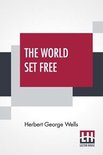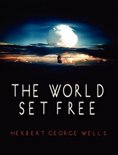The World Set Free
Afbeeldingen
Sla de afbeeldingen overArtikel vergelijken
Uitgever: Createspace Independent Publishing Platform
- Engels
- Paperback
- 9781500748111
- 05 augustus 2014
- 192 pagina's
Samenvatting
Productspecificaties
Inhoud
- Taal
- en
- Bindwijze
- Paperback
- Oorspronkelijke releasedatum
- 05 augustus 2014
- Aantal pagina's
- 192
- Illustraties
- Nee
Betrokkenen
- Hoofdauteur
- Herbert George Wells
- Tweede Auteur
- Hollybook
- Hoofdredacteur
- Mybook
- Hoofduitgeverij
- Createspace Independent Publishing Platform
Overige kenmerken
- Extra groot lettertype
- Nee
- Product breedte
- 152 mm
- Product hoogte
- 10 mm
- Product lengte
- 229 mm
- Studieboek
- Nee
- Verpakking breedte
- 152 mm
- Verpakking hoogte
- 10 mm
- Verpakking lengte
- 229 mm
- Verpakkingsgewicht
- 263 g
EAN
- EAN
- 9781500748111
Je vindt dit artikel in
- Categorieën
- Taal
- Engels
- Type boek
- Paperback
- Boek, ebook of luisterboek?
- Boek
- Studieboek of algemeen
- Algemene boeken
Kies gewenste uitvoering
Prijsinformatie en bestellen
Alle bindwijzen en edities (6)
-
1,99Direct beschikbaar
-
2,49Direct beschikbaar
-
8,95Direct beschikbaar
-
1,99Direct beschikbaar
-
11,992 - 3 weken
Levertijd
We doen er alles aan om dit artikel op tijd te bezorgen. Het is echter in een enkel geval mogelijk dat door omstandigheden de bezorging vertraagd is.
Bezorgopties
We bieden verschillende opties aan voor het bezorgen of ophalen van je bestelling. Welke opties voor jouw bestelling beschikbaar zijn, zie je bij het afronden van de bestelling.
Tooltip -
9,992 - 3 weken
Levertijd
We doen er alles aan om dit artikel op tijd te bezorgen. Het is echter in een enkel geval mogelijk dat door omstandigheden de bezorging vertraagd is.
Bezorgopties
We bieden verschillende opties aan voor het bezorgen of ophalen van je bestelling. Welke opties voor jouw bestelling beschikbaar zijn, zie je bij het afronden van de bestelling.
Tooltip
Rapporteer dit artikel
Je wilt melding doen van illegale inhoud over dit artikel:
- Ik wil melding doen als klant
- Ik wil melding doen als autoriteit of trusted flagger
- Ik wil melding doen als partner
- Ik wil melding doen als merkhouder
Geen klant, autoriteit, trusted flagger, merkhouder of partner? Gebruik dan onderstaande link om melding te doen.






